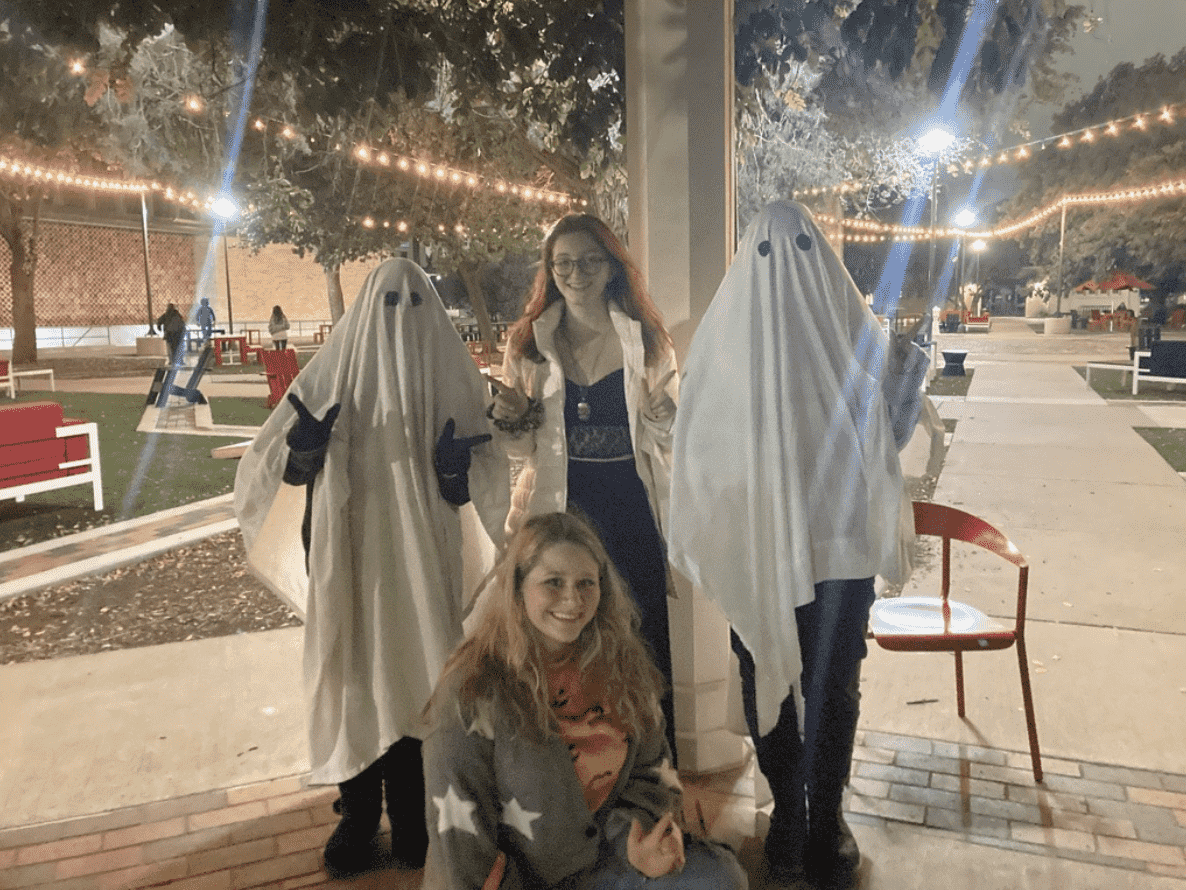TrUE Scholars
“Greetings and welcome to the Lubbock Arts and Intersections (LAIR) TrUE Scholars Toreador Research Experience (TRE)!”
I'd been so excited, getting into my top-choice research program. It had sounded like
such a unique experience, a great way to gain research experience in a way that could
cater to both my pre-medicine track and my Global Studies major, the STEM and the
Humanities. The possibilities seemed endless, almost overwhelmingly so.
And a cemetery tour? Unexpected, but my inner goth child was loving that concept.
I'd never even been to the Lubbock City Cemetery, and I knew next to nothing about
it, but I figured this would also be a good chance to learn about this community.
It was one thing to just be able to walk around the Lubbock City Cemetery, but listening
to our research mentors talk about specific details, histories, things I would have
overlooked, things I never would have looked into, was something else entirely.
Then I got to walk through the Jewish section of the cemetery. I was honestly shocked
that we had enough of a Jewish population to have a designated section—you never saw
more than ten people at our synagogue on Friday evening services unless it was the
high holidays. It was refreshing, seeing a piece of my culture, my community, represented
the otherwise WASP-y town that is Lubbock, Texas.

So naturally I had to focus my research on that. Representation and all.
I was initially really nervous about pursuing what eventually became my research topic,
Jewish burial practices and their evolution in West Texas. It felt simultaneously
so niche and so broad, and who would even care about the topic outside of my community?
Where on earth could I find information on Jewish burials in West Texas, let alone
Lubbock? With some encouragement from my research mentors, I made the leap of faith
and dove into research.
I planned to start with researching the burial practices of the three main Jewish
ethnic groups: Ashkenazim (Eastern European Jews), Sephardim (Mediterranean/Spanish
Jews), and Mizrahim (Middle Eastern Jews). Unsurprisingly, it was difficult to find
any content on Mizrahi burials (at least in English), but I was surprised that obtaining
sources on Ashkenazim, the dominant group in America, was so difficult. Instead, I
found the majority of information on burial practices and mourning traditions to be
on Sephardi Jews. This was particularly fascinating, especially when I found specific
resources on the role of Jewish women in Sephardi mourning customs in the book The
Miriam Tradition. This book was one of the main sources that encouraged me to narrow
my focus to the burial and mourning rituals themselves.
This is my new Roman Empire.
The odd combination of the lack of research in some areas, and the overabundance of
topics in others, has made it very difficult for me to focus myself on narrowing my
topic (much to the chagrin of my mentors—sorry, Garrett). I also worry I may not be
doing the history and the culture justice, feeling this odd weight of what I fear
to be my ancestors' expectations. Finally, there's this voice that persists in the
back of my head, telling me my topic isn't interesting enough, applicable enough,
specific enough, relatable enough.
Which is probably just the perfectionist in me speaking, I'll be the first to admit.
I'm very lucky to have such a fun and supportive research group. I look forward to
our weekly meetings, despite my perfectionist anxieties, because of the absolutely
amazing people on this team: my fellow toreadors are clever, funny, and insightful,
and my research mentors provide that much-needed balance of encouragement, wisdom,
and a “tough love” attitude that is surprisingly really motivating. I'm excited to
see where my research takes me, where it can apply to my academic goals, and most
importantly, what I'll learn about myself along the way.
Wreck ‘em!
